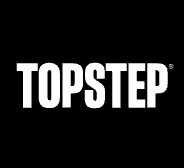Where Futures Prop Firms Are Headed in 2025

Why I Care About the Future of Futures Firms
If you told me a few years ago that I’d be making consistent withdrawals from multiple prop firms trading futures—I probably would’ve raised an eyebrow. Back then, prop trading felt like a mystery… and futures funding? Barely existed outside of one or two legacy names.
Fast forward to 2025, and we’re in the middle of what feels like a golden era for serious retail traders. But here’s the thing: not all prop firms are built the same, and not all of them are headed in the same direction.
I’ve seen this space shift fast. Some firms are clearly built for long-term success (I’ll call out a few I trust in this article), while others are still caught in the old game—churn and burn, hype over structure, or rules that look solid until you're actually in a trade.
So what’s next? Where is the futures funding model heading? And what should you be watching for if you want to stick around, grow your capital, and avoid wasting time (or reset fees)?
That’s what this article is about. No fluff, no corporate buzzwords—just a trader’s honest take on where the industry is going, what’s already changing, and who’s leading the charge.
Let’s dive in.
1. Tech Is Catching Up – And It’s About Time
Let’s be honest—most futures prop firms haven’t exactly been known for cutting-edge technology. For a while, it felt like some of these dashboards were held together with duct tape and optimism. But that’s finally starting to change.
What we’re seeing now is a push toward cleaner, more modern platforms that actually serve the trader. Real-time PnL tracking that doesn’t lag by 15 minutes. Evaluation dashboards that make sense. And funding logic that isn’t buried under five different PDFs.
Tradeify and Alpha Futures are good examples here. Their interfaces are smooth, fast, and clear. You know where you stand, what you’ve earned, and what rule you might be brushing up against—all without needing to email support or pray the backend updates in time.
And honestly, that kind of experience matters. Because when you’re in the zone, managing risk and trying to follow your plan, the last thing you want is a clunky UI or a funding model that leaves you guessing.
For firms that get this, tech isn’t just a backend upgrade—it’s a competitive edge. And for traders, it makes the entire journey more manageable (and less frustrating).
2. AI Will Shape the Rules (Whether We Like It or Not)
Look, I’m not here to sell you some “AI will change everything overnight” narrative. But let’s be real—some of the behind-the-scenes stuff is already shifting, and it’s not just hype.
Firms are starting to use AI and automation to monitor rule violations, track trader behavior, and flag high-risk patterns faster than ever. That doesn’t mean a robot is going to shut down your account mid-trade (not yet, anyway), but it does mean things like instant alerts, auto-liquidation, and smart rule enforcement are becoming more common.
And weirdly enough, this can actually benefit traders who play it straight.
If you’re the kind of trader who respects drawdown limits, sticks to your plan, and trades with structure—this tech works in your favor. It reduces wait times, increases payout speed, and minimizes disputes.
Take Profit Trader seems to be heading this way with smarter evaluations and responsive funding logic. The more firms lean into automation the right way, the more consistency and transparency we’ll get in return.
The risk? If a firm leans too hard into automation without good support or clear logic, things can get frustrating fast. Nobody wants to be auto-failed without context. So let’s hope they use AI to assist, not replace, common sense.
3. CFD & Forex Firms Are Entering the Futures Game
This one’s hard to ignore. Firms that built their base around forex and CFDs—FundedNext, E8 Markets, even Alpha Capital Group—are now eyeing the futures space like it’s the next big thing.
And why wouldn’t they? Futures are regulated, have tight spreads, great liquidity, and—let’s be honest—retail traders are waking up to the potential here. These firms see opportunity, and they’re moving fast.
The upside?
These companies usually bring better onboarding, cleaner tech, and marketing firepower. So the trader experience often improves. Their dashboards tend to be intuitive, and the pricing models are often more competitive than the legacy futures firms that never had much competition before.
But here’s the catch:
They don’t always get the nuances of futures trading. Evaluation logic designed for forex doesn’t always translate well to futures. The drawdown behavior is different. The volatility is different. And if they don’t adapt, it can feel a bit clunky.
That said, this growing competition is already forcing the “OG” futures firms to step up. You’ll see tighter rule clarity, better funding options, and more trader-first updates—not because they suddenly decided to be generous, but because they have to keep up.
For us traders? That’s a win either way.
4. Regulation Is Coming – Futures Firms Are More Prepared
Let’s not sugarcoat it—regulation is creeping in, and it’s only going to get louder from here. Especially in the U.S.
Now, I’m not saying regulators are about to knock on your door because you opened a micro NQ trade. But with the explosion of retail traders getting funded, and some shady operators popping up left and right, it was only a matter of time before this space caught more attention.
The good news?
Futures firms are already a step ahead.
Why? Because they’ve been operating inside a more regulated world from day one. The platforms they use (like Rithmic or Tradovate), the exchanges, the funding logic—it’s all built with some form of structure in mind.
Compare that to some CFD or forex firms registered on a random island with a half-functioning “funding” model and you’ll start to see the gap.
Does that mean every futures prop firm is bulletproof? Of course not. But when regulation tightens, the ones that already play by the book will survive. And honestly, I’d rather trade with a firm that isn’t flying under the radar just to avoid accountability.
If you’re serious about trading long-term, regulation is actually a good thing. It weeds out the fluff and forces firms to build sustainable models. And in 2025, that’s what will separate the ones still standing from the ones just flipping challenge fees.
5. U.S. Traders Still Drive the Market
Let’s be honest: if you’re trading futures and you’re not watching the U.S. session, you’re probably missing the main show.
I trade mostly NQ and ES myself, so for me, U.S. news, volume, and volatility are where the game is played. And I’m not alone—most of the serious futures traders I know are U.S.-based or at least aligned with U.S. hours.
That’s exactly why futures firms are doubling down on this market. It’s not just about volume; it’s about structure. U.S. traders expect things like:
- Proper support
- Fast payouts
- Real platform access (not some web-based simulator with mystery fills)
And firms that get that are the ones leading the pack. Tradeify is a great example here—they offer localized support, fast funding options, and payout systems that don’t make you wait two weeks to see your profits. That’s what makes a difference in 2025.
The U.S. market still sets the pace. And for firms to win, they’re going to need to speak the language—literally and operationally. That means localized education, proper broker access, and systems that are built to work when you’re actually trading, not when support wakes up eight time zones away.
The future is global, sure—but in this industry, America still writes the script.
6. Sustainability Will Outperform Hype
It’s easy to get caught up in flashy payout posts, discount codes, and “instant funding” promises—but most of that fades fast if the firm can’t deliver long term.
The firms that are thriving right now? They’re not chasing hype. They’re focused on stable rules, fair drawdown mechanics, and real trader support.
MyFundedFutures and Take Profit Trader come to mind. No drama, no crazy marketing—just consistent execution and a structure that rewards traders who treat this like a profession.
As traders get smarter, they’ll stick with firms that play the long game. That’s where the real edge will be in 2025.
7. New Markets, New Opportunities
Futures firms are starting to branch out—and fast. We’re already seeing more access to crypto futures, metals, energy products, and even niche instruments that didn’t get much love before.
This opens the door for traders with different edges—not everyone wants to trade NQ or ES every day.
The more variety firms offer, the more they’ll attract serious, specialized traders. And in a world where edge matters, that flexibility is huge.
Final Thoughts – The Prop Futures Space Is Just Getting Warmed Up
I’ve been around long enough to see how fast this space has changed—and 2025 feels like a major turning point. Futures prop firms are maturing. Some are doubling down on transparency, trader-first rules, and tech that actually works. Others are still chasing quick signups, hoping we don’t notice the cracks.
But here’s the truth: as traders get better, firms will have to get better too. More of us are treating this like a real career, not just a weekend hobby. That means we expect cleaner rules, faster payouts, and support that doesn’t vanish the second you get funded.
And thankfully, a few firms are already showing what the future should look like. Tradeify, MyFundedFutures, Take Profit Trader—they’re not perfect, but they’re building in the right direction.
So if you’re wondering whether you’re late to the game—you’re not. The futures funding model is still growing, and for traders who are willing to stay consistent, there’s more opportunity now than ever before.
Just stay sharp, pick firms that match how you actually trade, and don’t fall for the noise. The future looks good—if you’re with the right firm.
🎁 Win a $100,000 TopOneFutures Challenge
Every month, I’m giving away one 100K Futures evaluation from TopOneFutures worth $225.
⚠️ Exclusively to new newsletter subscribers. Enter your email. Get in the draw. Get weekly high-value content and best offers, no BS.
Enter Now & Win a 100K Challenge

.png)


.jpeg)
.webp)

.webp)
.jpeg)
.png)
.png)
.jpeg)
.jpeg)


.png)

.png)






.png)
.png)
.jpeg)
.jpeg)

.jpeg)
.png)
.jpeg)




.jpeg)


.webp)
.webp)
.webp)